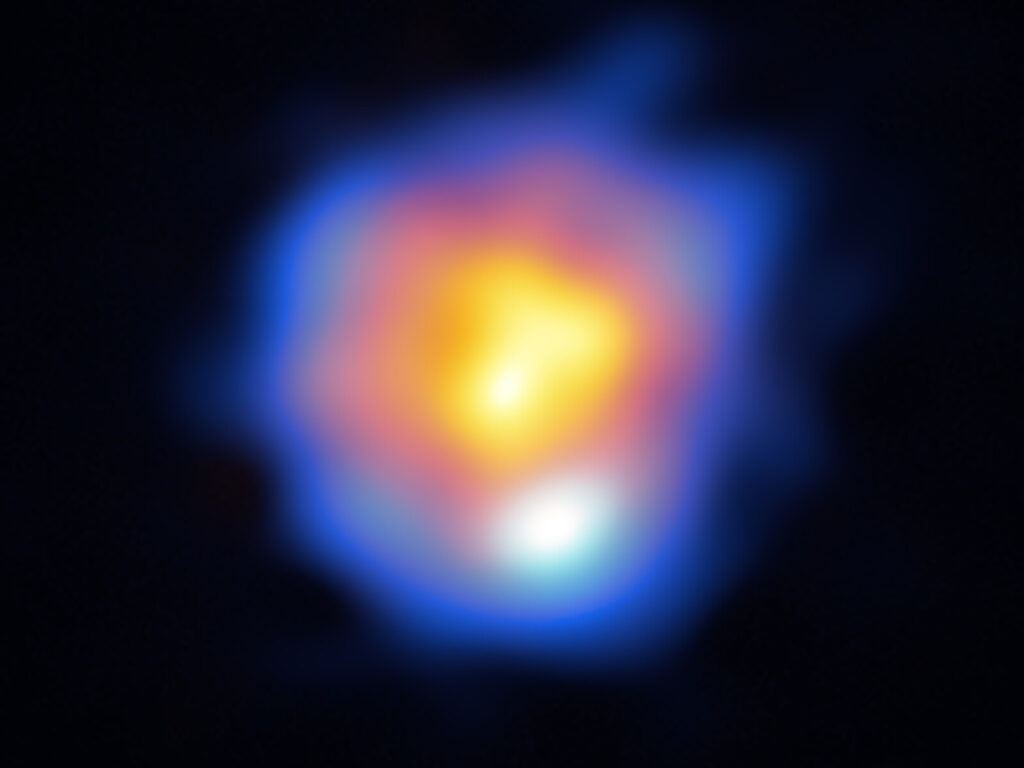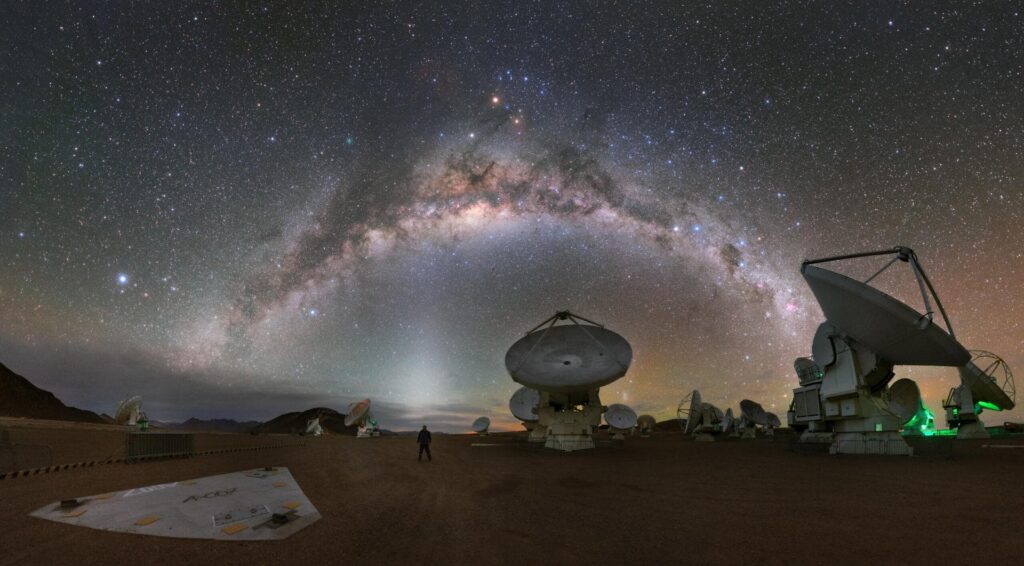Astronomers published the most detailed image obtained by the ALMA radio telescope complex for the entire time of its operation. It captures the variable star R Leporis.

R Leporis is located at a distance of 1,350 light-years from the Milky Way. It represents a red giant that has reached the final stage of its evolution. Its radius is 400 to 500 times that of the sun. If R Leporis was in the place of our Sun, then its outer boundary would reach the asteroid belt. In addition, the star pulsates, periodically changing its brightness.
Despite such an impressive size, R Leporis is not destined to become a supernova. It doesn’t have enough mass for that. In the future, the star will shed the outer layers of the atmosphere and only the core will remain of it. It will gradually cool down and shrink, turning into a white dwarf.
The image of the R Leporis was obtained with the maximum possible configuration of the ALMA complex. It consists of 66 antennas that can be located in different locations on the Chajnantor high plateau in Chile. Each of them is equipped with receivers that allow observing radio waves in different frequency ranges. The resolution of ALMA increases both with an increase in the maximum distance between the antennas and with an increase in the frequency at which observations are carried out.

To photograph the dying star, ALMA antennas were spaced to the maximum possible distance of 16 km. In addition, the researchers used Band 10 receivers. They allow observations at frequencies up to 950 GHz, which is the maximum possible for this array. A combination of these factors made it possible to obtain a star image with a resolution of 5 milliseconds, which is a record value for ALMA. According to astronomers, this is comparable to the observation of a 10-meter object on the surface of the Moon.
According to https://www.eso.org
Follow us on Twitter to get the most interesting space news in time
https://twitter.com/ust_magazine
